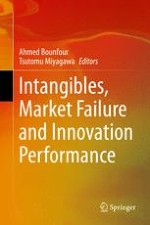2015 | OriginalPaper | Chapter
8. How Does the Market Value Management Practices of Japanese Firms? Using Management Practice Survey Data
Authors : Atsushi Kawakami, Shigeru Asaba
Published in: Intangibles, Market Failure and Innovation Performance
Publisher: Springer International Publishing
Activate our intelligent search to find suitable subject content or patents.
Select sections of text to find matching patents with Artificial Intelligence. powered by
Select sections of text to find additional relevant content using AI-assisted search. powered by
